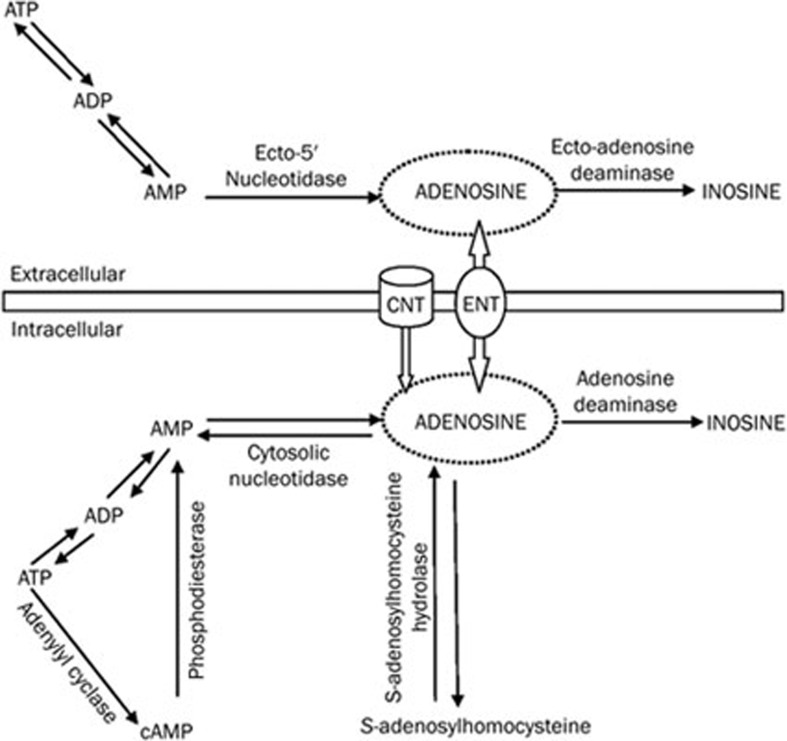Figure 2.
Pathways for adenosine formation. Intracellularly, adenosine is primarily formed by dephosphorylation of ATP, although cAMP and S-adenosyl homocysteine are alternative precursors for adenosine formation. Extracellularly, adenosine is thought to be a product of ATP that is metabolized by a series of ecto-enzymes. Nucleoside transport processes mediate cellular uptake or release of adenosine and other nucleosides, including inosine. Concentrative nucleoside transporters (CNT) and equilibrative nucleoside transporters (ENT) are highlighted.

